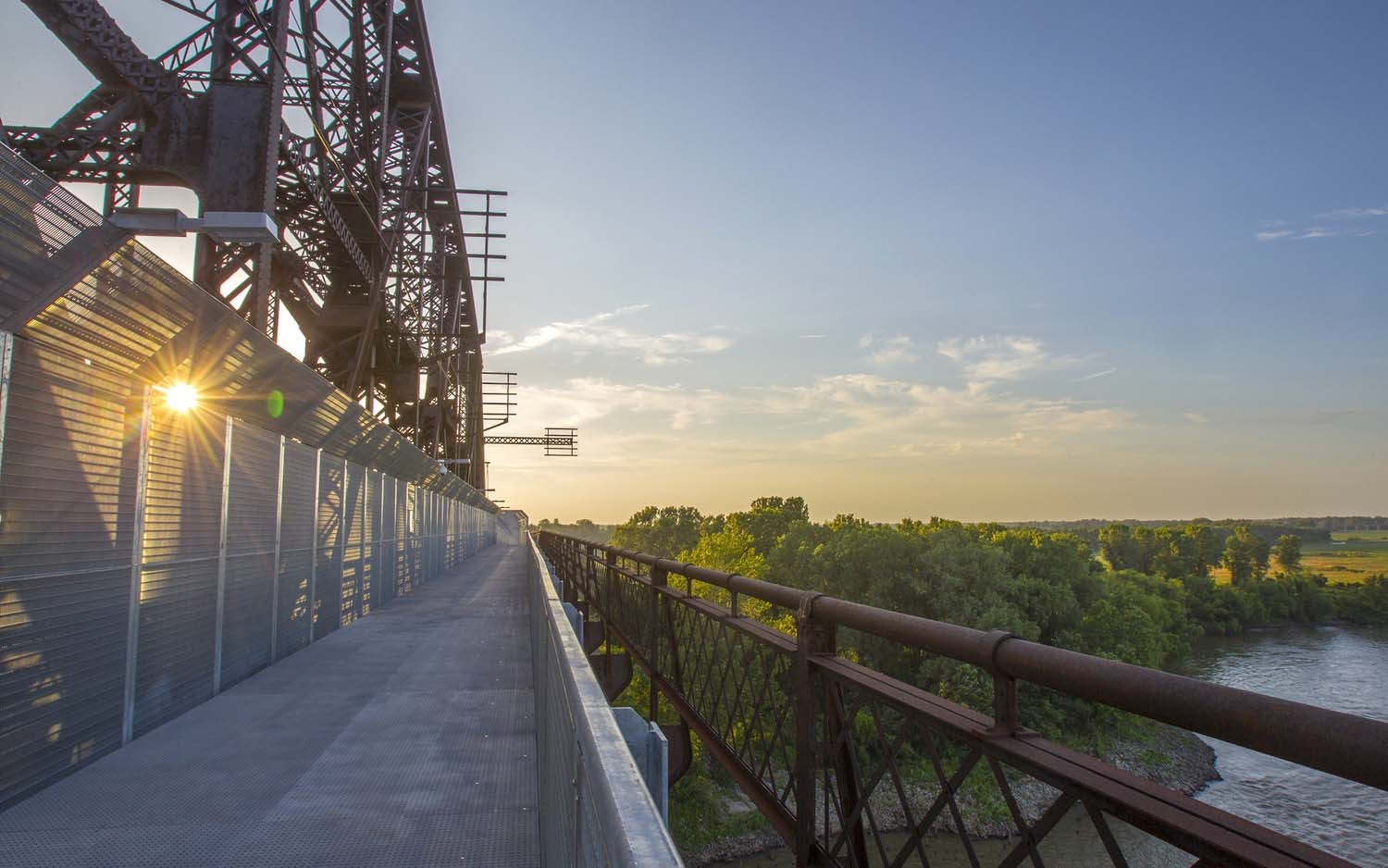 bigrivercrossing.com
bigrivercrossing.com
As is well known, the city of Memphis sprawls a good bit. In fact, we are used to hearing politicians contend that, area-wise, Memphis is larger than Chicago, although that claim has an apocryphal ring to anyone who has driven through the Windy City from north to south.
It is undeniable, though, that over the weekend an event occurred on the downtown side of Memphis that will both magnify its size and extend its borders enormously in the eyes of the outside world.
This was the event known as the Big River Crossing, a commemoration that occurred in tandem with the completion of the Main Street to Main Street project that now links downtown Memphis with downtown West Memphis — and does so via an innovative pedestrian/bicycle pathway extending all the way across a refurbished Harahan Bridge, heretofore used only by trains. At night, moreover, the bridge has the capacity to be visually spectacular, thanks to a lighting system that can shine in “architectural white” or, as it did on Saturday and Sunday nights, in dazzling rainbow colors.
This new addition to the city’s landscape is no serendipity. It is the result of years of visionary thinking and liberally applied elbow grease on the part of several local pioneers, who, in tandem with counterparts across the river in Arkansas, worked together to accomplish what, at first blush, had seemed a crazy idea, even to some of its most avid backers.
The father of this project is the distinguished trader/investor Charlie McVean, but he had help in designing it, funding it, and executing it from a host of others — notably the late Jim Young of Union Pacific Railroad in Little Rock, who overcame his industry’s bias against shared rail/pedestrian structures, and 9th District Congressman Steve Cohen, who went to bat for the project in Washington and ended up making it possible through the acquisition of a $15 million TIGER (Transportation Investment Generating Economic Recovery) grant that completed the necessary funding package.
The TIGER grant not only significantly underwrote the project (technically known as the Main Street to Main Street Multi-Modal Connector Project) but also made it possible for both of the bookend cities, Memphis and West Memphis, to undertake significant rehabilitation of their downtown cores. It is one of those rare circumstances from which environmentalists and urban-growth enthusiasts can both take heart.
And McVean and his collaborators aren’t resting on their laurels. They imagine further work on the adjoining Mississippi River levees that would result in a recreational artery extending all the way to New Orleans and to the creation of what would be, in McVean’s words, the world’s largest land park.